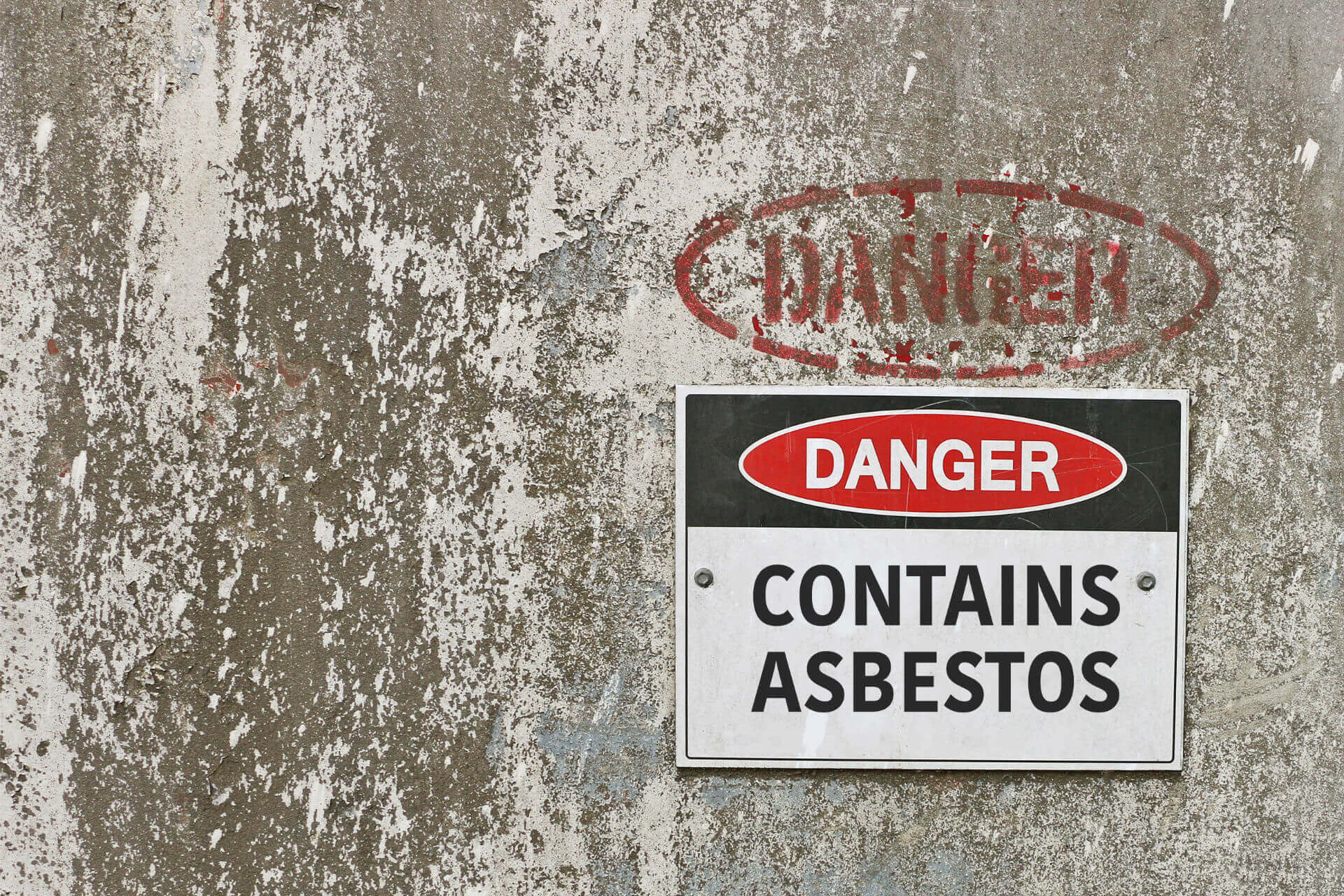What You Need to Know About Asbestos Exposure and Mesothelioma Claims

What is the link between mesothelioma and asbestos exposure?
Asbestos use was widespread for decades, and millions of people were exposed to it at work (occupational asbestos exposure) or secondhand. Some have developed serious diseases as a result of their exposure.
Often, companies knew about the risks of their workers developing mesothelioma but did not adequately warn or protect people from exposure.
An experienced lawyer at our firm can help you through the legal process to recover the compensation you deserve for mesothelioma and asbestos exposure. Suppose you or a loved one suffered injury or death from an asbestos-related illness, such as asbestosis or mesothelioma. In that case, you should talk to an asbestos lawyer without delay.
Mesothelioma and Asbestos Exposure Basics
Asbestos refers to a family of naturally occurring minerals that can be separated into thin, tiny, flexible threads. These fibers are soft but highly durable, resistant to heat and chemicals, and don’t conduct electricity. As a result, asbestos was commonly used for many years as an insulating material in many commercial and industrial settings and products.
It is actually possible to be exposed to asbestos through environmental asbestos exposure. This is when asbestos naturally found in the earth is released into the atmosphere. Chrysotile asbestos is a form of asbestos that is commonly used, for example.
Unfortunately, it is also highly toxic. Though this was known as early as the 1950s, it continued to be used without proper warning or safety precautions, and millions have been exposed.
Asbestos-related Disease
Whenever a material containing asbestos is disturbed, the tiny fibers can become airborne and be inhaled or ingested. Pleural mesothelioma develops when inhaled asbestos is trapped in pleura cells.
They can spread widely through the body, where they get trapped, and can cause irritation, inflammation, scarring, and even cancer. Several disabling and life-threatening diseases can result from the exposure, often after many years— as many as 10 to 50.
The diseases are usually due to recurring exposure on the job, but second-hand (in family members) and environmental exposures also happen.
Mesothelioma and asbestos exposure-related diseases include:
- Asbestosis (scarring of the lung)
- Mesothelioma (a type of cancer)
- Pleural effusion (water around the lungs)
- Pleural thickening and plaques (scarring of the lining of the chest cavity)
- Lung, throat, and ovarian cancer
Asbestosis
Asbestos fibers trapped inside the lungs can result in inflammation and eventual scarring of the lung tissue. It can interfere with proper lung function when it becomes severe, leading to coughing, shortness of breath, and disability.
Between inhalation and asbestosis, diagnosis can be as long as 20 to 60 years. There is no cure, and mesothelioma tumors can get progressively worse even after asbestos exposure is long stopped.
Mesothelioma
Mesothelioma is a relatively rare cancer that affects mesothelium (the thin linings that surround many body cavities and internal organs). There is clear evidence that asbestos causes mesothelioma, with at least 80% of mesothelioma patients having a known history of asbestos exposure (and the rest possibly being exposed without their knowledge).
Although rare, it’s the most common form of cancer associated with asbestos. It’s a hazardous and aggressive cancer, difficult to treat, and often fatal. Asbestos is the only known cause of this deadly cancer. There are different types of Mesothelioma and Asbestos Exposure, depending on what part of the body is affected:
- Pleural mesothelioma — occurs in the pleura, the lining of the chest cavity surrounding the lungs; this is the most common, accounting for 80% to 85% of cases.
- Peritoneal mesothelioma — occurs in the lining of the abdominal cavity.
- Pericardial mesothelioma — occurs in the lining surrounding the heart and is the rarest form.
Other Cancers
Asbestos has been classified as a known human carcinogen, which is a substance that causes cancer. There is evidence that asbestos exposure is linked to an increased risk of lung, throat, ovary, stomach, and bowel cancers.
FAQ: Asbestos Exposure and Mesothelioma
Who’s at risk for an asbestos-related disease?
People who became ill from asbestos were exposed to it regularly, most often on the job, where they worked directly with the material or through substantial environmental contact (such as near mines or shipping facilities).
However, there is evidence that family members of workers heavily exposed to asbestos face a second-hand increased risk due to exposure to asbestos fibers brought into the home on workers’ shoes, clothing, skin, and hair.
Where and how was asbestos used?
Asbestos has been used in numerous types of commercial industries:
- Building and construction industries used it to strengthen cement and plastics, as well as asbestos insulation, roofing, fireproofing, and sound absorption.
- The shipbuilding industry used it to insulate boilers, steam pipes, and hot water pipes.
- The automotive industry used it in brake shoes and clutch pads. It was used in many old buildings and household appliances.
Many people across many sectors stand to develop mesothelioma. In short, it has been used in many products, including:
- Insulation
- Pipe coverings
- Fireproofing
- Adhesives
- Insulating cement
- Caulking material
- Soundproofing
- Shingles
- Drywall taping compounds
- Ductwork connectors
- Joint compounds
- Spackling
- Elevator brake shoes
- Flooring backing
- Old appliances
- Paints
- Fireproof textiles
- Chalkboards
- Some talc products
- Wallboard
- Brake pads
- Clutches
- Gaskets
- Valves
Each of the above has its own risk factors. Do any of these sound familiar to you? It is hard to believe so many people may be at cancer risk. You should check with your doctor that you haven’t developed malignant pleural mesothelioma. If you have, see an asbestos exposure lawyer to find out your options.
What jobs and workplaces are potential locations for occupational exposure to asbestos?
Some jobs are inherently dangerous, but the risk factor associated with asbestos exposure is a matter of life and death.
Workers and workplaces involved in manufacturing, installing, using, demolishing, or removing any asbestos-containing products may have been exposed to asbestos.
That obviously includes a lot of people, such as:
- Electricians
- Miners
- Military personnel (especially the Navy)
- Auto workers
- Drywall workers
- Engineers
- Factory workers
- Railroad workers
- Machinists
- Pipefitters and steamfitters
- Carpenters and masons
- Textile workers
- Construction workers
- Demolition workers
- Firefighters
- Mechanics
This is not to diminish the danger of home asbestos fibers. Remember that, in some years, the second most common occupation among those dying of mesothelioma and asbestos exposure has been “homemaker/housewife.”
This reminds us that workers’ families are also highly vulnerable to inadvertent asbestos exposure. According to Asbestos.com, secondary exposure of family members to asbestos workers creates a risk of developing mesothelioma.
What about asbestos exposure in Illinois?
Over the years, Illinois has had a wide range of industries in which asbestos was used. These have included manufacturing, power generation, petroleum processing, and a lot of facilities that received shipments of asbestos-contaminated materials from other states. Many buildings throughout Illinois had asbestos used in their construction. Illinois has ranked in the top 10 states for asbestos-related diseases resulting in fatalities.
Companies that might be legally responsible for asbestos injury:
- Manufacturers of products
- Asbestos contractors
- Bankrupt former companies
- Raw asbestos fiber companies
- Building owners
- Asbestos mining companies
- Asbestos products suppliers
- Designers or engineers
- Employers, in rare cases
How can I get compensation for asbestos-related disease and injury?
There are several ways to receive compensation or recover damages from those responsible for the consequences of this dangerous product. The best approach will vary from case to case. Sound recommendations can be made only after careful evaluation by a personal injury lawyer.
Some of the possibilities include the following.
A Personal Injury Claim
Compensation is sought from responsible parties for the personal suffering and pain associated with the illness, which can occur from direct or secondhand exposure. Damages can also be sought for medical expenses, lost wages (including future income), travel expenses for treatment, etc.
A Wrongful Death Claim
This type of claim aims to compensate the survivors and beneficiaries for their loss after a loved one’s asbestos-related death. Damages can be sought for medical bills, funeral expenses, lost income, counseling related to the death, legal advice, personal costs, other illness-related services, and, in the case of spouses, for the loss of emotional support and comfort from the death of their spouse.
Asbestos Bankruptcy Trust Funds
Over the years, several companies that manufactured, distributed, sold, or used asbestos products and materials have either gone out of business, merged with other companies, or gone bankrupt, often directly related to the liability from their use of asbestos. Even though such companies no longer exist, it may still be possible to receive compensation from “asbestos trusts” that they were required to establish. Over 60 such trusts with over $30 billion in funds can be dispersed to those who meet the established criteria for compensation from the fund.
Compensation for Veterans
Retired military (especially those who served in the Navy, Merchant Marine, Coast Guard, and U.S. Army transport service) make up one of the largest populations of people exposed to asbestos. As a result, the VA has designated Mesothelioma and Asbestos Exposure as one of several diseases that qualify for disability benefits. Of course, the availability of benefits is dependent on meeting specific criteria.
Workers’ Compensation
This is tricky in Illinois since most diseases don’t appear long after exposure. Under Illinois law, there are restrictions and limitations on claims against employers outside the workers’ compensation process.
There are also strict time limitations on when these claims can be made. Under rare circumstances, workers’ compensation can be obtained. And the restrictions apply only to the employer. Legal claims against all other parties, such as manufacturers, suppliers, etc., are permitted.
It’s important to know that most legal claims related to asbestos never go to court. Over 90% are rapidly settled before ever going to trial. This can save you from a stressful and costly process and result in more rapid compensation.
When Do I Have to Make a Claim?
Of course, the sooner you start the legal process, the sooner you may receive compensation to help with medical bills and other expenses. Also, legal actions against responsible parties must be made within a limited time frame allowed by law (known as the statute of limitations). You can lose legal rights by waiting too long to submit your claim. In Illinois, personal injury and wrongful death claims must be made within two years.
However, because of the long period of time between exposure and when asbestos-caused diseases appear, courts recognized that this two-year period generally starts when your diagnosis was made or at the death of your loved one and when you “also know or reasonably should know that the injury was caused by the wrongful acts of another.”
How Much Can I Recover for My Asbestos Claim?
Of course, every claim is different, and no result can be guaranteed. Each case has to be evaluated individually, and the amounts of damages will depend on a wide variety of factors. Suffice it to say that asbestos-related disease is often devastating, so the compensation can be substantial.
How Much Will the Legal Process Cost?
These cases can be complicated and costly. However, most attorneys will accept the case based on a contingency fee. Payment of fees is contingent on the outcome of the case. This means you pay no legal fees unless compensation is recovered in your case. My initial consultation for these cases is always free.
Speak to a Mesothelioma and Asbestos Exposure Attorney
You can see that these cases can be complicated and the issues complex. A lot depends on the evaluation of your situation and the facts of your case. I’ll meet with you and carefully listen to understand your concerns and what happened to you or your loved one.
I’ll work to have your claim evaluated and clearly explain the options and answer any questions you might have. I can help get the information we need to consider all your options and make the right choices for your case.
If you are in Decatur, Bloomington, or anywhere in Central Illinois, and you feel you might need an attorney because you or a loved one have a claim related to mesothelioma and asbestos exposure, please contact Onward Injury Law for more information.



